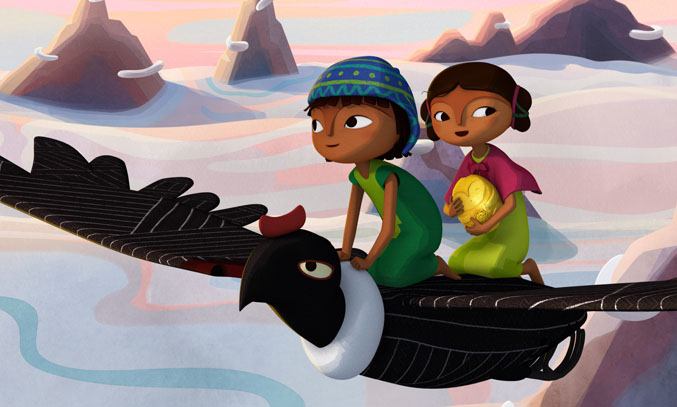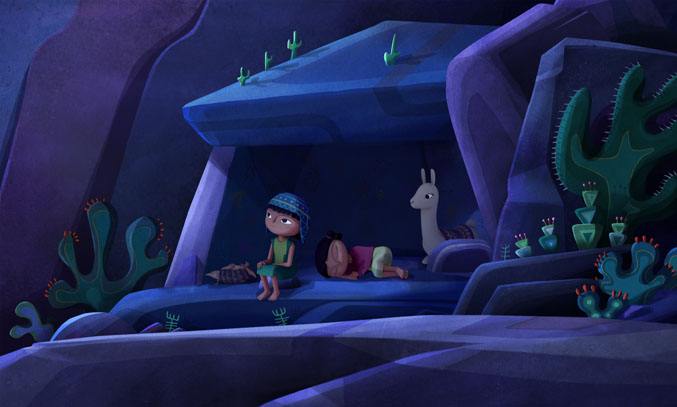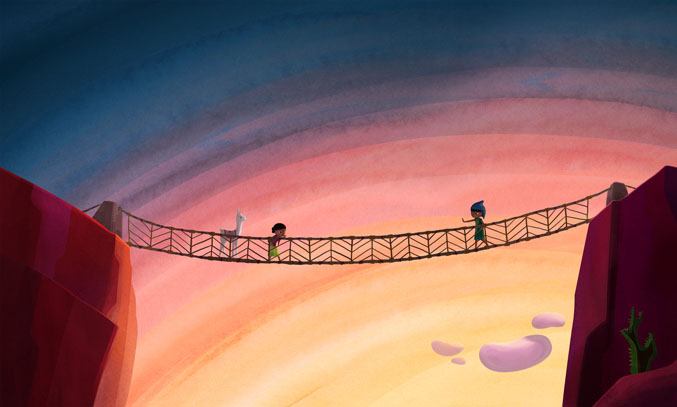Charming, colourful and vividly imagined, PACHAMAMA is a children’s animated adventure story which touches on Peruvian history
From the studio behind ERNEST AND CELESTINE, Juan Antin brings his animated children’s tale PACHAMAMA to the big screen at the BFI London Film Festival.
Set in 16th-Century Peru, PACHAMAMA follows fun-loving 10-year-old Tepulpaï who lives in a remote village in the Andes Mountains. His people worship Pachamama, the Earth Mother, and her gods in order to thank them for abundant crops and good weather. When an Inca overlord confiscates the villagers’ sacred statue – the Huaca – Tepulpaï and his friend Naïra, leave the village to try and get it back. Tepulpaï succeeds but when he comes back from the Golden City, he is followed by greedy Spanish Conquistadors who want to seize the village’s treasures.
Charming, colourful and vividly imagined, PACHAMAMA is a children’s animated adventure story which offers a deep dive into the culture, nature and landscapes of the Andes Altiplano. Drawing you in with its warm, welcoming colour palette and lush landscapes, Antin’s captivating story touches on Peruvian history before and during the Spanish Conquest where three cultures are in conflict – the villagers who worship Pachamama, the Incas who demand tribute and the Spanish imperialists led by Francisco Pizarro.
Using bright colours and vivid shapes, PACHAMAMA follows a traditional children’s animated formula, its character illustrations very much childlike in nature with big eyes, big heads, little bodies and simple outlines. Different geometric shapes are used effectively here to show the difference between the characters, their beliefs and their cultures. The holistic and harmonic villagers are drawn with round organic shapes while the Incans are much boxier in appearance. The lines and shapes become even more extreme for Spanish Conquistadors, the sharp angles of their jawlines, metal helmets and horses, contrasting against the softer, rounder shapes of the villagers.
Made specifically for the under-10s, the dialogue and narrative in PACHAMAMA is understandably simplistic although the film does suffer from some pacing issues, particularly in the first half. Slow to start, a large section of the film is dedicated to demonstrating the culture and customs of the villagers, as well of Tepulpaï’s journey to Golden City, both of which offer little in the way of drama.
As the main character, Tepulpaï is also easy to dislike at the start. Arrogant and headstrong, Tepulpaï’s conceited attitude, which is made all the stronger against the softer, sweeter and kinder Naïra, means you’ll find it hard to root for the character during the first half of the film. Thankfully, like all good rites-of-passage tales, Tepulpaï soon discovers his own abilities, eventually finding a newfound respect for his own culture to become the hero of the story.
At just over 70 minutes long, PACHAMAMA, for the most part, is short and engaging enough to keep the attention of even the most fidgety eight-year-old, and its historical background is sure to appeal to their parents. All in all, a well-researched, exquisitely artistic family film.

PACHAMAMA premieres at BFI London Film Festival on 21 October 2018.
Donna is the Founder and Editor of Frankly, My Dear UK. By day, she works as a digital marketing specialist, by night she reviews film, theatre and music for a wide range of publications including WhatsonStage and The Reviews Hub. Loves Formula 1, prosecco and life.














Social Profiles